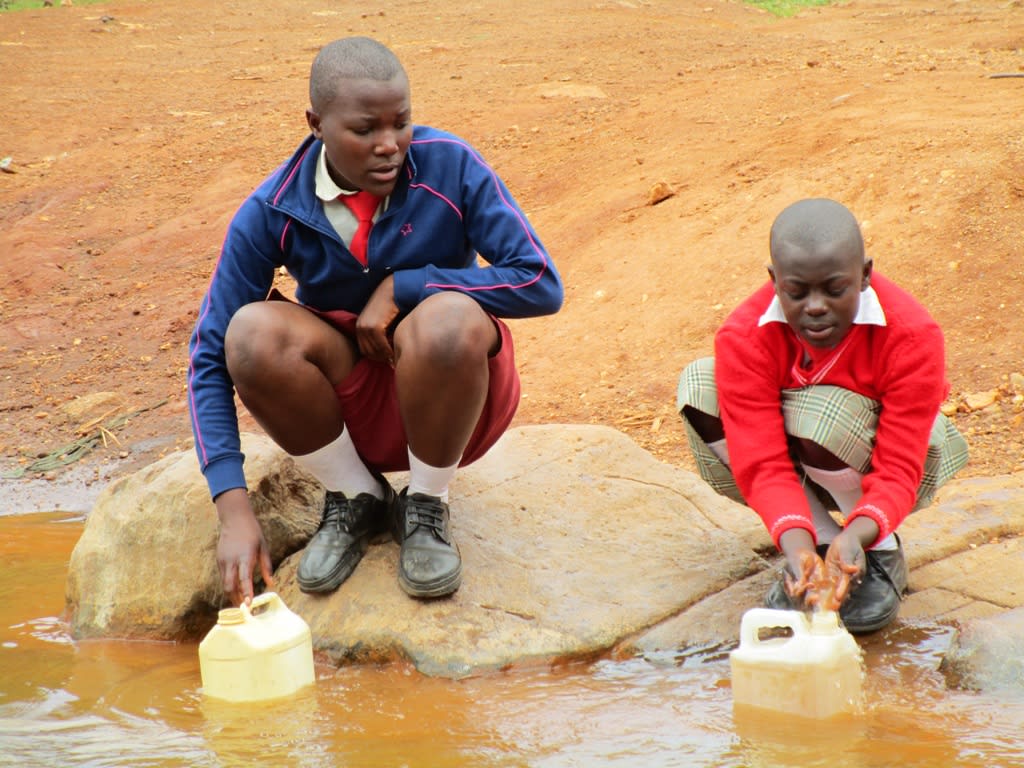Shisango Secondary School was started in the year 2009 through the combined efforts of Shisango Primary School's teachers and parents. Shisango Secondary School is a girls' school, which now has two academic streams, form one and two. Since its inception, the school has managed to put up one block of classrooms.
The secondary school has an enrollment of 150 girls as the enrollment of the new students joining form one still going on, and 4 teachers. The primary section has a population of 750 pupils and 25 teachers.
(Editor’s Note: While this many people may have access on any given day, realistically a single water source can only support a population of 350-500 people. This school would be a good candidate for a second project in the future to ensure that adequate water is available. To learn more, click here.)
Most of the girls attending this school come from neighboring communities. Though there are many challenges, such as not having enough personnel or classrooms, water scarcity is the biggest issue students deal with on a daily basis.
Water
Currently, the Shisango Secondary School students carry water from home each morning. The water quality and its storage are questionable, since the containers themselves are visibly dirty. They are also collecting water from unsafe sources such as open streams.
During the dry season, most of the area's streams dry up, which leaves children having to walk even farther for water.
Sanitation
Since we've been in relationship with Shisango Secondary School for a few years, we've worked with them on improving basic hygiene and sanitation. Unfortunately, water scarcity forces them to sacrifice environment hygiene in favor of basic needs.
Here's what we're going to do about it:
New Borehole
Shisango Secondary School needs a reliable source of clean water on school grounds. We met this school a two years ago and have been trying to solve this issue ever since. We first drilled a borehole, but it has silted up. Since we learned of this complication, we've stringently vetted new hydrogeologists and drillers. After phone calls, meetings, and multiple references, we've found a team that's a great match.
We have already conducted tests at three different locations around the school, and have found the best location for a new borehole. The adjacent primary school students are also looking forward to using this borehole.
This project is a part of our shared program with Safe Water and Sustainable Hygiene Initiative (SAWASHI). Our team is pleased to provide the reports for this project (edited for readability) thanks to the hard work of our friends in Kenya.

 Borehole Well and Hand Pump
Borehole Well and Hand Pump
 Rehabilitation Project
Rehabilitation Project




















